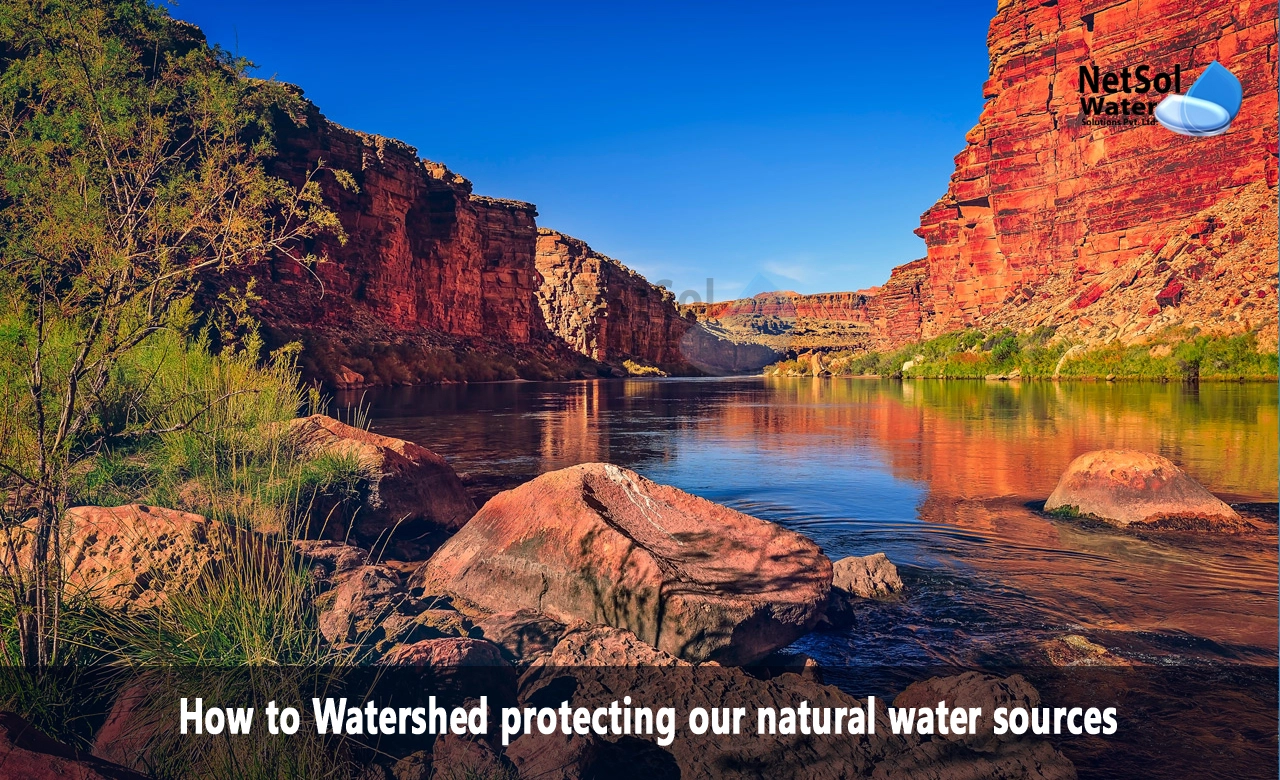How to Watershed Protecting our Natural Water Sources?
The water we use everyday in our homes, farms, and industries comes from rivers, lakes, reservoirs, and aquifers recharged by rain and snow. To maintain clean and reliable water supplies, we need to protect the health of the watersheds that feed and sustain these sources. Watershed management provides a framework to coordinate conservation efforts across hydrologically connected areas. In this blog, we’ll explore what watershed management entails and how it can safeguard water quantity and quality.
What is a Watershed?
A watershed is a geographic region that drains precipitation into a common network of rivers, streams, and lakes, eventually reaching the sea. Ridgelines between drainage basins form the boundaries between watersheds. Every waterway has an associated watershed capturing all the surface and groundwater feeding it. These drainage networks are interconnected – pollution upstream impacts communities downstream.
Major watersheds can span thousands of square miles across multiple states or nations. Smaller sub-watersheds are subsets nested within larger basins. By managing land uses carefully across entire watersheds, we can ensure clean, reliable water supplies for all needs – drinking, recreation, industry, agriculture, and ecosystems.
Threats to Watershed Health
Watersheds face diverse risks that degrade water supplies if not addressed through coordinated management:
- Polluted runoff from farms, cities, industry damages water quality through excess nutrients, bacteria, chemicals, eroded soils, and toxic discharges.
- Overdrawing groundwater faster than natural recharge rates causes aquifer depletion, land subsidence, reduced stream flows, and saltwater intrusion in coastal areas.
- Dams and water diversions for irrigation alter natural flow regimes, harming fish migration and riparian ecology downstream.
- Livestock overgrazing, land clearing, and roads on slopes increase erosion and sediment loads into water bodies during rainstorms.
- Wetland drainage reduces natural filtration and flood control benefits these ecosystems provide.
- Climate change disrupts historical precipitation patterns, threatening both water quantity and quality.
Mitigating these threats across entire watersheds is essential to safeguard water supplies for all communities reliant on a hydrologically interconnected region.
Watershed Management Strategies
Watershed management deploys a mix of strategies tailored to local conditions and needs:
- Monitoring water quality, flows, and aquatic ecosystem health using field data and geospatial analysis to identify priority issues.
- Modeling hydrological processes, land use impacts, and climate projections to plan future water use sustainably.
- Zoning land uses to avoid polluting industries and intensive agriculture adjacent to drinking water supplies.
- Implementing best practices on farms and forests to curb soil erosion through reduced tillage, cover crops and riparian buffers.
- Protecting/restoring wetlands and floodplains to enhance natural filtration and flood control.
- Upgrading stormwater drainage, sewage systems, and stream crossings to prevent urban and rural runoff pollution.
- Educating all stakeholders on conserving water use, properly managing septic systems, avoiding fertilizer overuse, and properly disposing hazardous chemicals.
- Establishing minimum stream flow requirements to sustain aquatic ecosystems even during droughts.
- Collaborating across municipal and state jurisdictions to align policies in shared watersheds.
Careful watershed planning allows developing water resources sustainably while conserving ecosystems.
Case Study: New York City Watershed
A vivid example of effective watershed management is the New York City water supply system. The city meets the needs of over 9 million residents by draining several large watersheds to the north. Historically, agricultural runoff contaminated these water sources with dangerous bacteria and nutrients.
Rather than building a costly new filtration plant, the city invested over $1 billion since the 1990s in watershed conservation efforts. This funded programs like:
- Buying sensitive watershed land outright to prevent development.
- Paying farmers to minimize fertilizers, employ no-till methods, and plant riparian buffers.
- Upgrading septic systems and sewage plants to curb waste infiltration.
- Partnering with communities on sustainable development.
As a result, NYC now enjoys some of the cleanest municipal water in the country reliably and affordably from well managed natural watersheds. This case highlights the value of holistic watershed strategies.
Watershed Stewardship
Caring for watersheds is a shared responsibility among all communities relying on the same rivers and aquifers. We each live in a watershed impacting many downstream. Only through cooperation from residents, businesses, agriculture, and government at all levels can these critical natural resources be sustained for the future. Maintaining healthy watersheds for clean and abundant water is a foundational need for any prosperous society.
Netsol Water is Greater Noida-based leading water & wastewater treatment plant manufacturer. We are industry's most demanding company based on client review and work quality. We are known as best commercial RO plant manufacturers, industrial RO plant manufacturer, sewage treatment plant manufacturer, Water Softener Plant Manufacturers and effluent treatment plant manufacturers. Apart from this 24x7 customer support is our USP. Call on +91-9650608473, or write us at enquiry@netsolwater.com for any support, inquiry or product-purchase related query.



